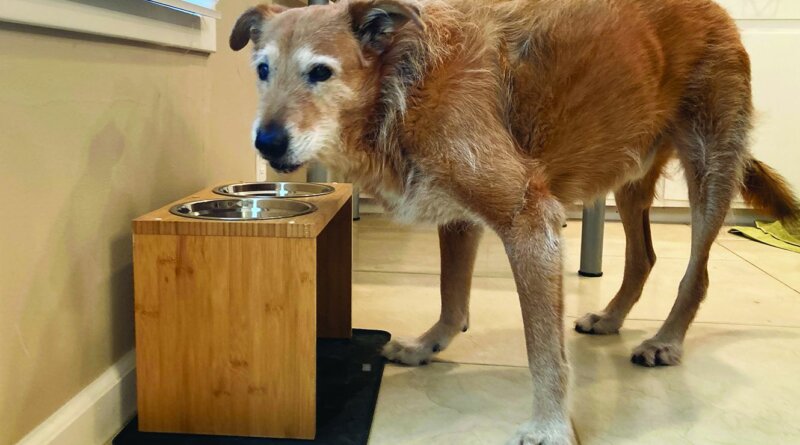All About Elevated Dog Bowls

To elevate or not to elevate – that is the question. Elevated dog bowls (also called raised dog bowls) have become popular for a lot of reasons – not the least of which is that they are available in many attractive finishes and materials. Another reason elevated bowls are becoming popular is that they look more comfortable to eat from, compared to a plate on the floor. However, are elevated dog bowls good for dogs? Consider that dogs are naturally accustomed to eating and drinking from a plate or bowl on the floor. They’ve evolved with their meals on the ground.
Who should not eat from elevated DOG bowls
Ironically, it was owners of large and giant breed dogs who started the trend toward elevated dog bowls, but their dogs are the ones most likely to develop a life-threatening condition when fed from a raised bowl. Large and giant-breed dogs who eat from an elevated feeder have an increased risk of developing gastric dilation and volvulus (GDV, also known as “bloat” and “turning of the stomach”).
GDV is a medical emergency of the highest order. It comes on suddenly. A dog with GDV will be restless and may pace. Drooling and panting are common. His belly may look distended, and he may react painfully to pressure placed on his left flank. The symptom that clinches the diagnosis is unproductive retching, like the dog is trying to vomit but can’t. A dog with these symptoms needs veterinary care as soon as possible.
A study published in the Journal of the American Veterinary Medical Association in November 2000 examined risk factors for developing GDV. The study identified other factors that more strongly contributed to the incidence of GDV, but eating from raised feeders was implicated in a significant percentage of cases of GDV in large and giant-breed dogs.
No one knows why eating from an elevated bowl might increase the likelihood of GDV in large- and giant-breed dogs, though some speculate that the higher head position causes the dog to swallow more air as they eat. But eating and drinking from floor-level bowls does not increase the risk of GDV in dogs of any size, so that’s where I’d suggest owners put most dogs’ bowls.
Who may benefit from eating from raised DOG bowls
In contrast, elevated feeders may be beneficial for dogs who have been diagnosed with arthritis in their neck or forelimbs and have difficulty or pain when lowering their head to eat or drink. Dogs who have suffered a neck injury or have had cervical-spine surgery also may benefit from having their food and water bowls raised.
If you think your dog would benefit from elevated bowls, discuss your dog’s condition with their veterinarian prior to making the purchase. For all other dogs, bowls on the floor are just what the doctor ordered.




